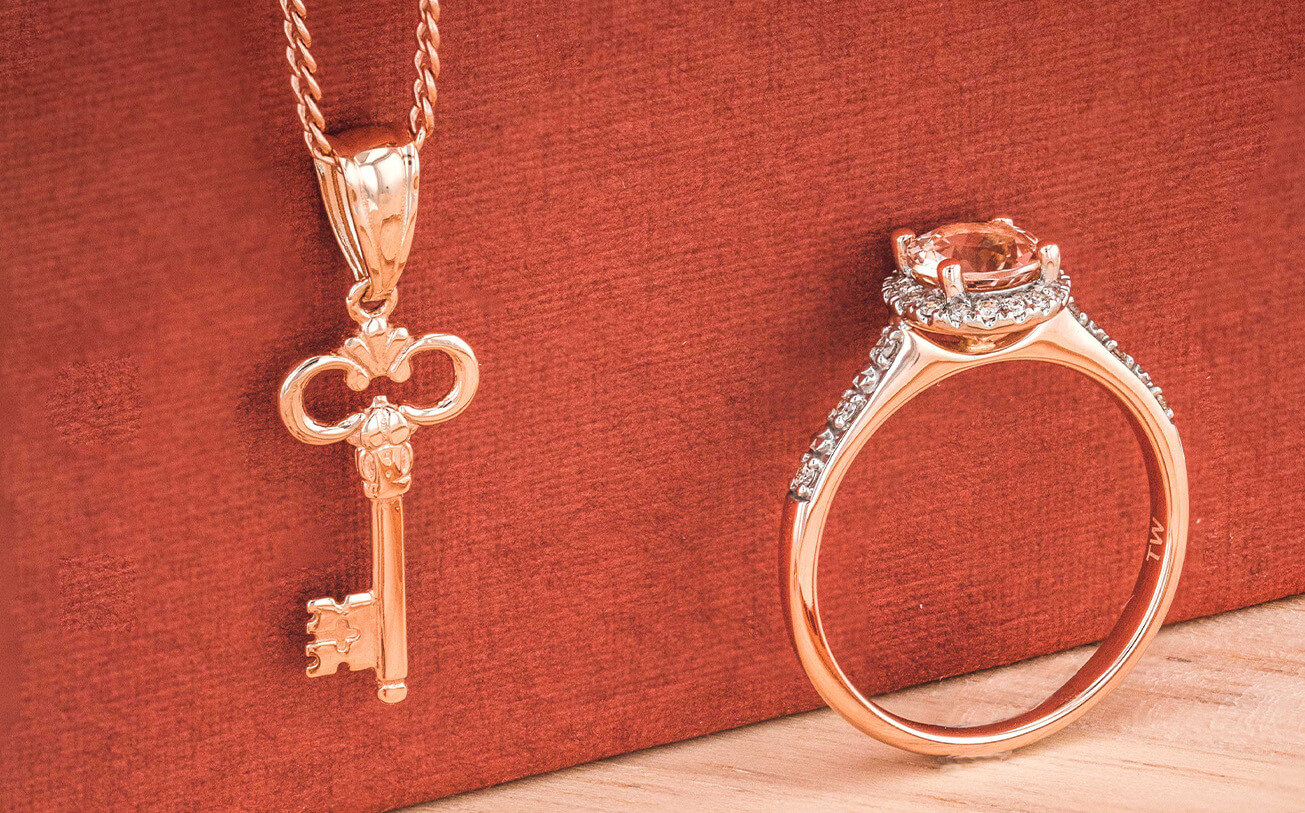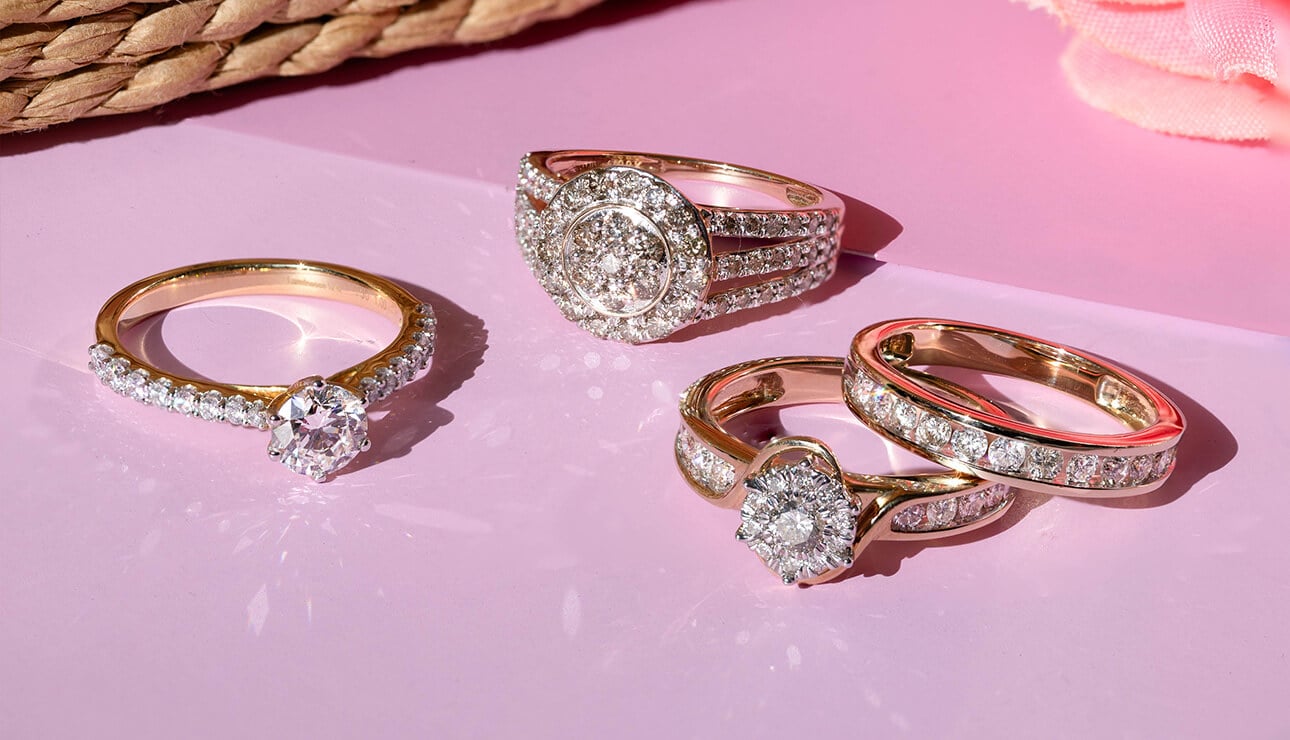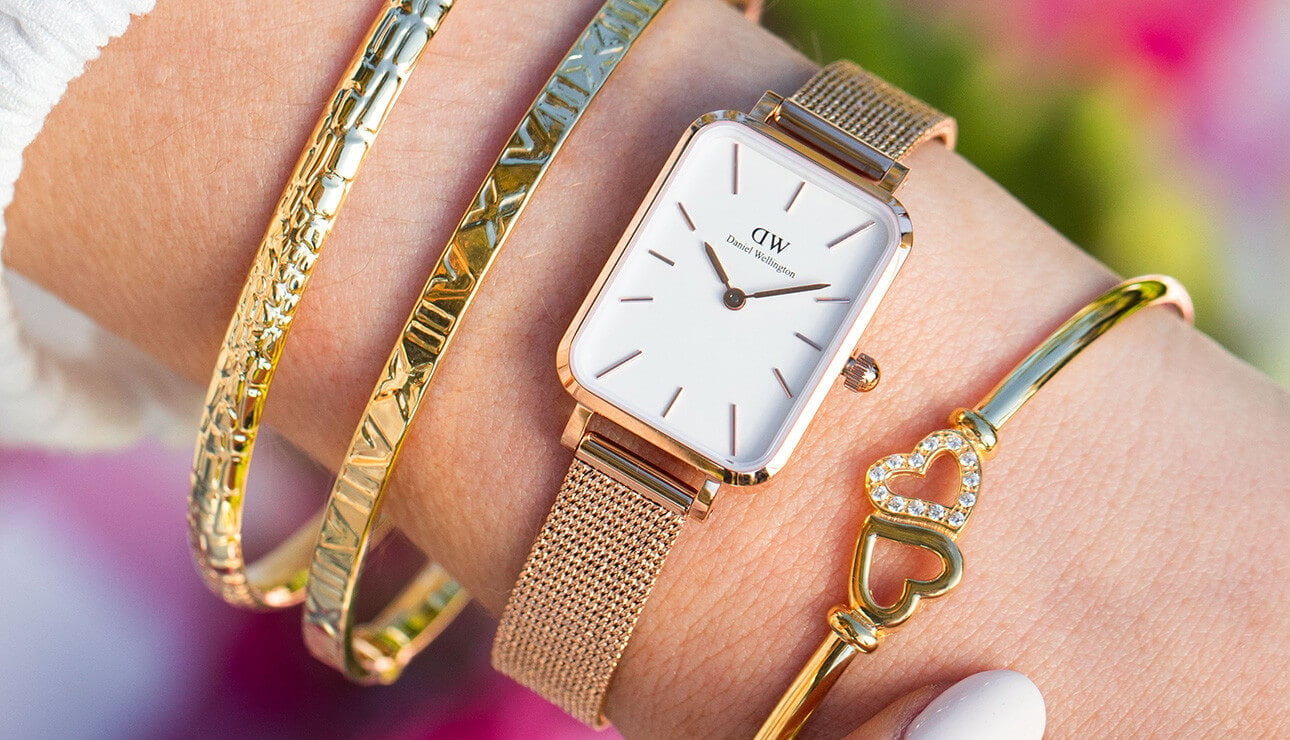Now that Spring has arrived, rose gold is about to be everywhere. But this shouldn't come as a surprise to all the fashionistas out there as people have been obsessing over rose gold for years. From rose gold jewellery and accessories to homeware and much more, rose gold was even named the Pantone Colour of the Year in 2016.
Known for its romantic blush-pink hue, jewellery crafted from rose gold is known to bring a contemporary feel to your look that can make even the simplest of outfits pop. Complimentary to most skin tones, rose gold helps bring out the blush tones in those with fairer skin and the warmth in those with a darker complexion.
So, we know that this blush-toned metal is considered to be a type of gold jewellery, but what are the components that allow it to fall under this metal type and how is rose gold different from yellow gold? Read on to find out.
Overview:
- How Is Rose Gold Different From Yellow Gold?
- Rose Gold Vs Rose-Plated
- How To Style Rose Gold Jewellery
- Can Rose Gold Rings Be Resized?
How Is Rose Gold Different From Yellow Gold?
Aside from its colour, the main way rose gold jewellery differs from yellow gold jewellery is its metal components. Rose gold jewellery is a metal alloy that is comprised of pure gold and copper. The unique mix of these two elements is what gives the metal its rosy pink pigment. Fortunately, this also makes rose gold hypoallergenic, unlike other gold types, rose gold does not contain nickel which is known to cause reactions in those with metal sensitivities. However, aside from those two key elements, that is essentially where the differences between rose gold and yellow gold end. This is because much like yellow gold, rose gold also often contains silver and both metal types are regarded as an alloy.
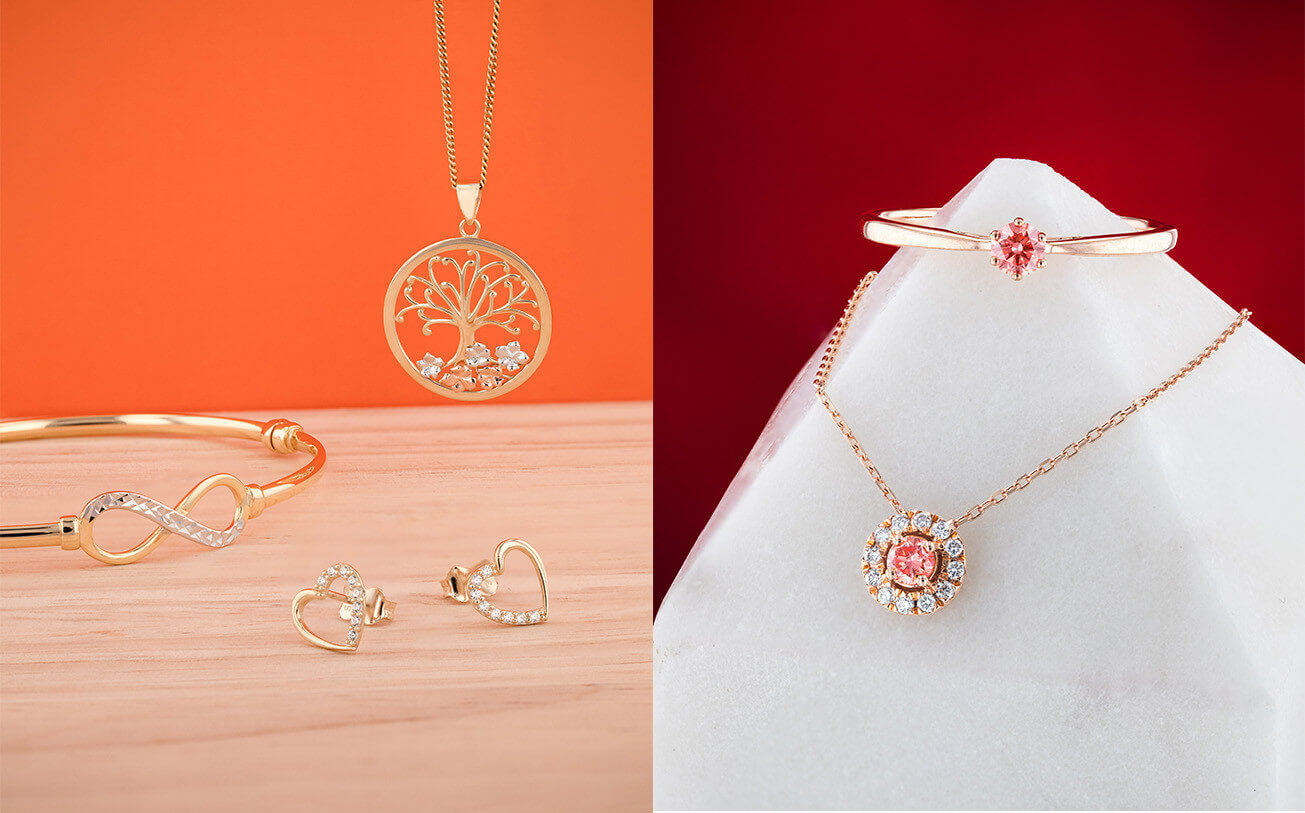
A common misconception when you buy gold whether it be yellow gold, rose gold or even white gold jewellery is that it is 100% pure gold. However, this is simply not the case as pure gold is too soft and malleable to be used for jewellery, particularly in stone-set pieces such as diamond rings and stud earrings. As a result, gold is usually combined with other metal alloys including copper, zinc, silver and nickel to make it heavier and more durable. The amount of gold present in a gold piece is normally determined by its carat weight with 9ct gold jewellery containing 37.5% gold, 14ct gold containing over 58% and 18ct gold containing 75%. Any gold item stamped with 24ct is generally the only type to be considered 'solid gold' as it contains almost 100% pure gold.
Rose Gold Vs Rose-Plated
You may be aware of another type of rose gold on the market, known as rose-plated jewellery. Despite looking and feeling very similar to rose gold jewellery, rose-plated jewellery is not the same. Rose-plated jewellery is essentially sterling silver jewellery or another type of base metal that has been coated with a thin layer of rose gold. This differs from regular rose gold jewellery (even the pieces that are a metal alloy) in the sense that while it too contains a base metal, it is filled with a certain percentage of rose gold rather than just being coated in a thin layer of it.
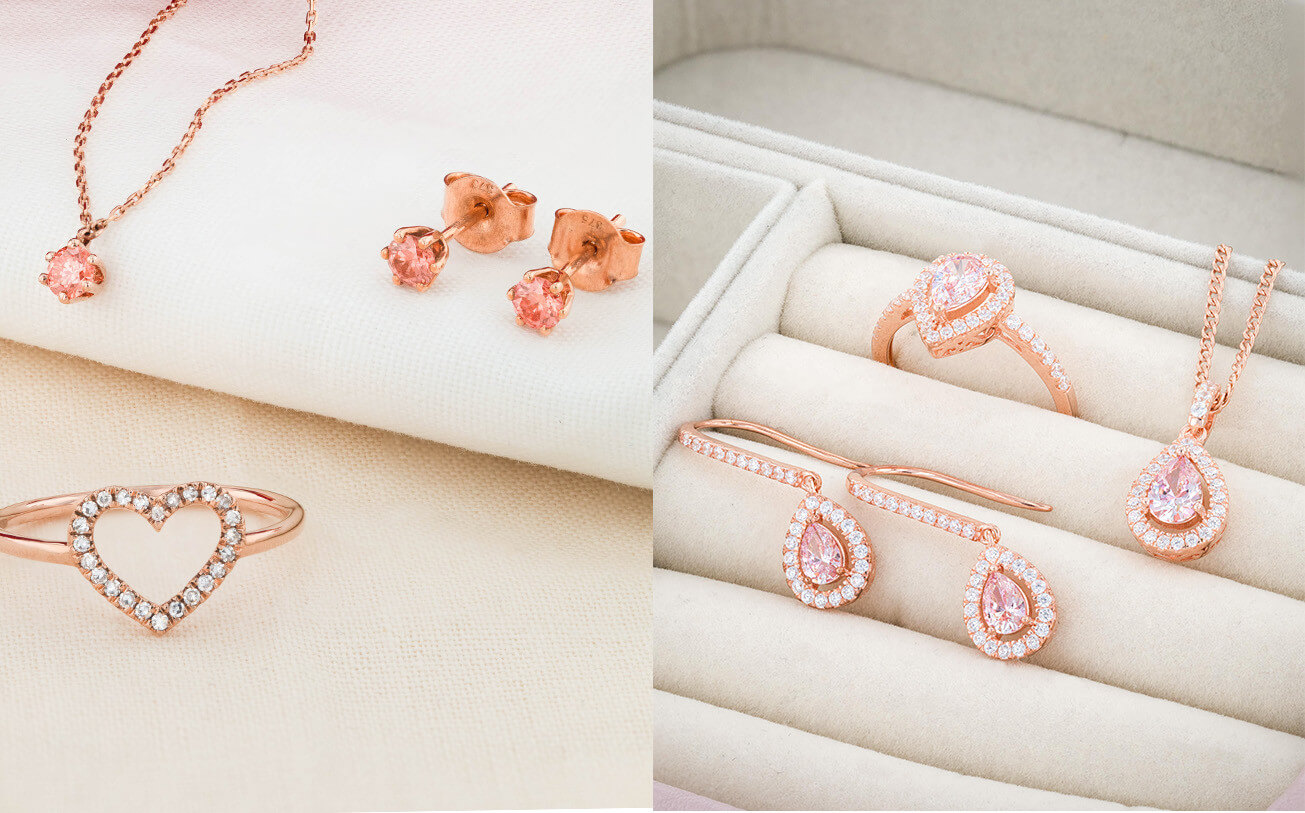
There are pros and cons to choosing rose-plated jewellery over rose gold jewellery and vice-versa, but one of the biggest reasons people choose plated gold over filled gold is price. Gold-plated jewellery is substantially cheaper than rose gold-filled jewellery due to the gold purity level in plated jewellery being significantly lower than what you will find in actual rose gold jewellery. Another drawcard of rose-plated jewellery is that if the base metal is sterling silver it is essentially hypoallergenic. However, when considering rose gold versus rose-plated, it is important to weigh up one significant drawback that may deter people from investing in rose-plated jewellery is its durability. However, with that said, it is possible to keep your rose-plated jewellery in tip-top shape.
Keeping your rose gold and gold-plated jewellery looking gorgeous is simple:
- When you’re not wearing your rose gold jewellery, store it safely in your jewellery box. To reduce the risk of any scratching, it’s best to keep your rose gold jewellery in a velvet or satin pouch away from your other jewellery.
- Avoid any harsh chemicals or cleaning products while wearing your rose gold jewellery. This will stop the metal’s appearance from becoming dull.
- To give your rose gold jewellery an extra sparkle and clean every so often, simply wipe over it with a special jewellery cleaner and cleaning cloth.
How To Style Rose Gold Jewellery
Not that you know how rose gold is different from yellow gold, let us get into how you can style it. With rose gold jewellery, it's easy to make yourself look effortless and stylish. Rose gold looks gorgeous on everyone and on all skin tones. Because of its versatility, rose gold pairs beautifully with a wide variety of gemstones, metals and any outfit. Don’t be afraid to mix and match!
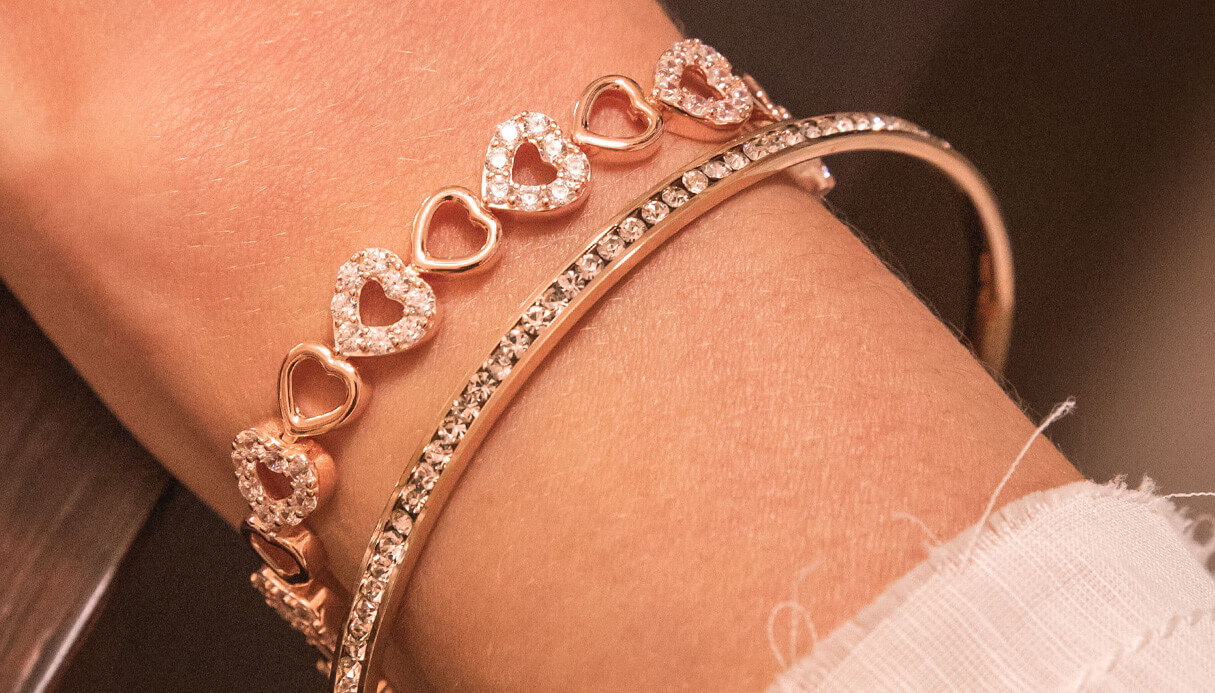
Layering
Layering your jewellery is so on-trend this year and really easy to pull off. For a contemporary look, pair a simple rose gold chain with a couple of rose gold necklaces. Opt for something simple and classic like a plain rose gold heart necklace or add some sparkle with diamonds or perhaps even gemstones. Pro tip: morganite jewellery and rose gold make for the perfect combination, especially in Spring.
STERLING SILVER ROSE GOLD PLATED TEXTURED PAPERCLIP 41CM CHAIN

$29.00
Sterling Silver Rose Gold Plated Textured Paperclip 41cm Chain… read more
9CT YELLOW GOLD SILVER FILLED OPEN HEARTS PENDANT WITH 45CM CHAIN

$159.00
Feel the love with this two open hearts pendant. The 9ct gold filled pendant includes a chain.… read more
If layering your neckline isn't really your thing, you can always try layering your wristwear instead. No matter the weather, layering your bracelets and bangles is a great way to enhance your look. Keep it classic by sticking to one colour scheme or add a little edge to your look by mixing and matching metals. Simply add a few rose gold bangles and bracelets to your wrist to create depth. You can even add a dress watch in a rose gold hue to make even more of a statement.
9CT ROSE GOLD SILVERFILLED LIGHT WEIGHT 3MM X 65MM BANGLE

$999.00
Step out in style with this gorgeous 9ct Rose Gold Silverfilled Light Weight 3mm X 65mm Bangle. The bangle is crafted in the smooth finish of rose gold with a shiny lustre and the blush tones of rose gold that… read more
9CT ROSE GOLD DIAMOND ADJUSTABLE 16-18CM BRACELET

$299.50
$599.00
This rose gold bracelet is delicate and elegant, yet it stands out with its striking diamond. A beautiful alternative bracelet to wear out in the sun with friends, or to impress with out at night.… read more
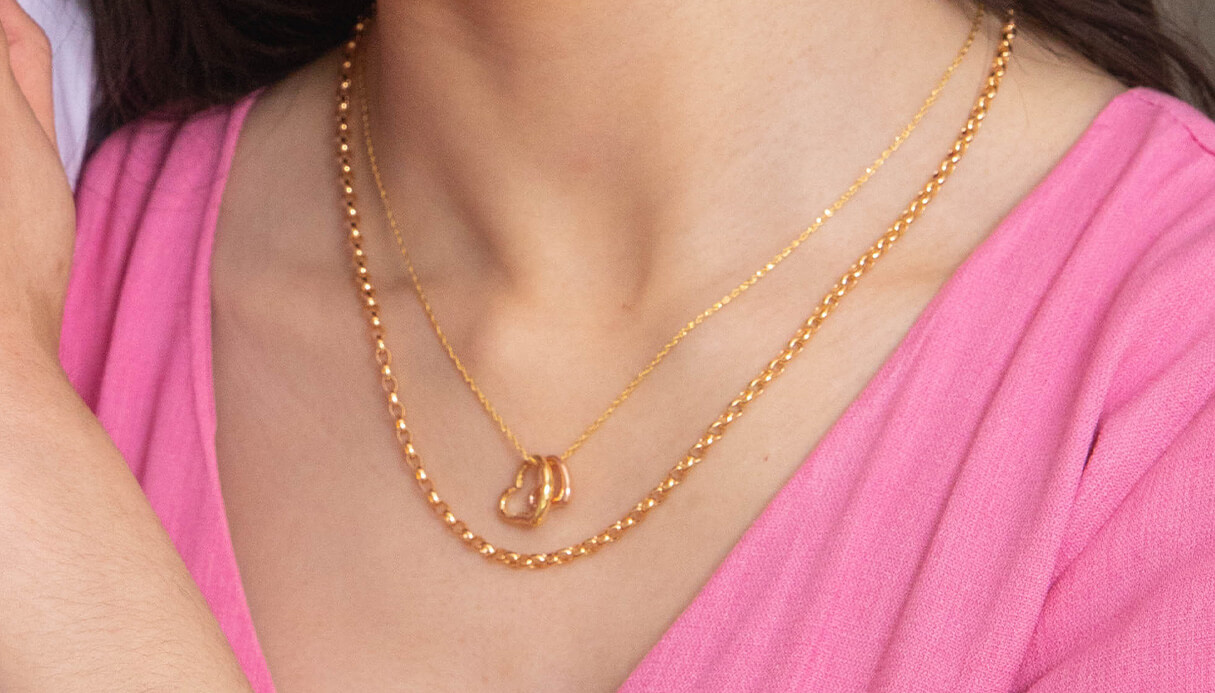
Add A Pop Of Colour
As we already mentioned, rose gold looks stunning with gemstones. Morganite rings set in rose gold are an all-time favourite for us, however, we also love how rose gold flatters rubies and amethyst. These gemstones add a splash of colour to any outfit and really make a statement. Rose gold rings with lighter gemstones are subtle and feminine, while darker gemstones give you a dramatic and eye-catching contrast.
ROSE GOLD PLATED STERLING SILVER CREATED RUBY + CUBIC ZIRCONIA RING

$99.99
Elevate your style with the Rose Gold-Plated Sterling Silver Created Ruby + Cubic Zirconia Ring—a unique piece that seamlessly blends a stunning vintage feel with a contemporary twist. This captivating ring features a vibrant created ruby and dazzling cubic zirconias,… read more
Match With Nude & Neutral Colours
Still, feeling a bit stuck with how to wear rose gold? For a chic look, pair rose gold jewellery with nude and neutral-coloured outfits - it lets the pink hues pop! Plus, with rose gold and neutral colours, you can layer up your jewellery! Pair some rose gold earrings with a rose gold bangle (or a rose gold bracelet) and you’ll light up any room.
9CT ROSE GOLD SILVER FILLED TWIST HOOP EARRINGS IN 10MM

$19.99
In a gorgeous rose gold hue, the 9ct rose gold-filled 15mm twist earrings feature contemporary twists. The earrings are a must-have.… read more
9CT ROSE GOLD INITIAL "A" PENDANT ON 43CM CHAIN

$259.00
A tender keepsake to wear every day. The 9ct Rose Gold Initial "A" Pendant on 43cm Chain, is delicate and quaint with just enough feature to beam from the neckline. Give a personalised look to your appearance and play with… read more
9CT ROSE GOLD SILVERFILLED 65MM OPEN TWIST BANGLE

$499.00
Classic design with a modern twist, there is no going past this stunning 9ct gold filled bangle in 65mm.Also avaible in Yellow Gold and White Gold.… read more
Can Rose Gold Rings Be Resized?
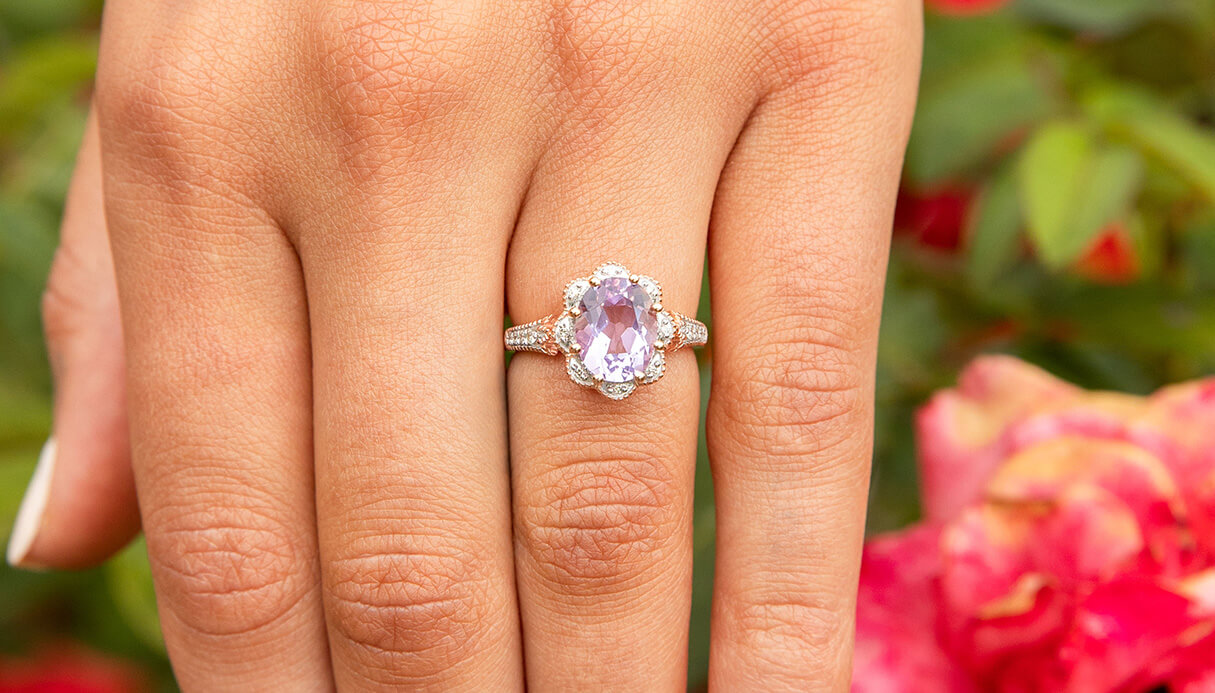
Rose gold is very temperamental and can crack during the resizing process. However, there are jewellers who will attempt it but it is not advised. There are also several variants of rose gold, so finding a match won't always be easy.
You May Also Like:
- Which Metal Is Best Suited For Your Skin Tone? : A Jewellery Metal Types Guide
- A Guide To Office Fashion: Our Top 5 Work-Appropriate Jewellery Styles
- Jewellery Pros & Cons: Gold Vs Silver Jewellery
- How To Care For Diamonds: A Guide
- 5 Must Have Silver Jewellery Pieces You Need In Your Collection
- Unique Birthstone Gifts For All
- 5 Types Of Gold Rings We Love

